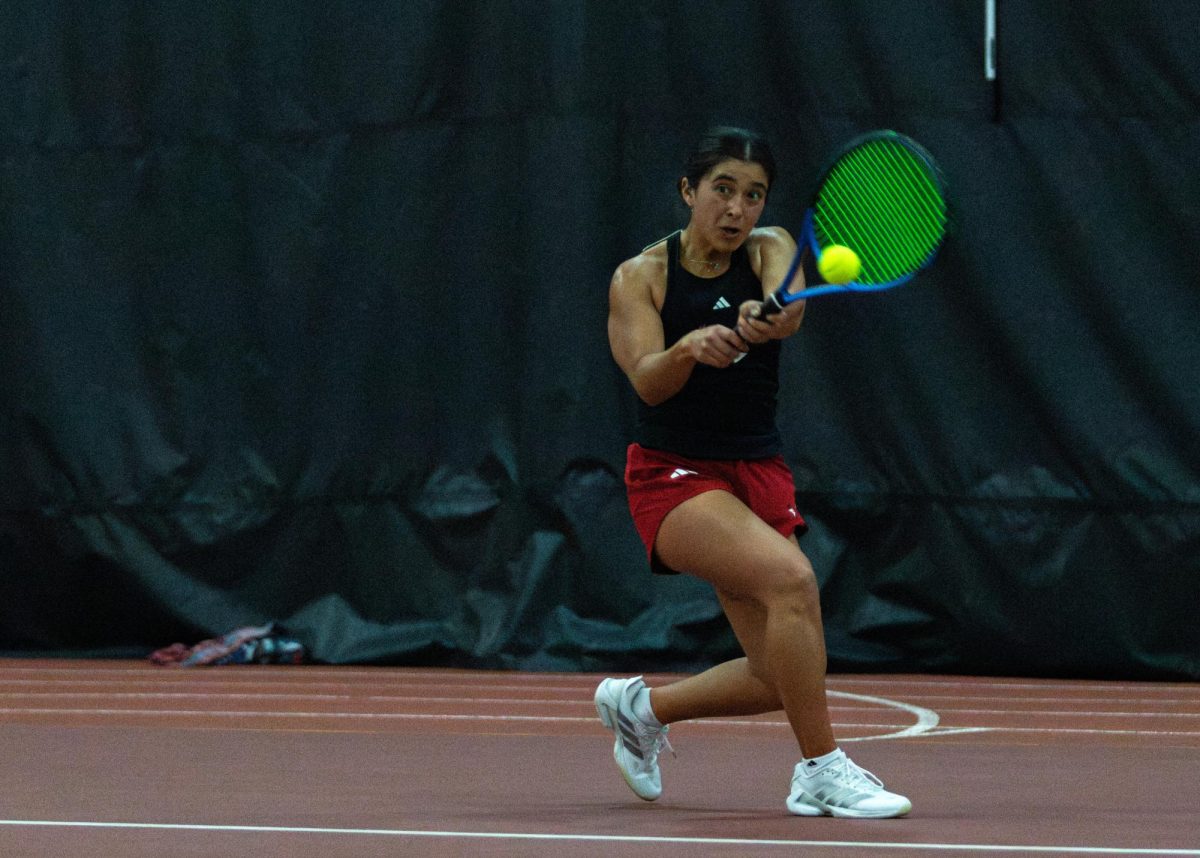New parking construction expands lot 12
April 21, 2013

Current view from the west side of parking lot P12.
By Lorna Hartman, Staff Writer
and Deanna Hammack for The Easterner
easterner.news@gmail.com
To ease parking challenges, 553 new parking spaces are planned, which will enlarge parking lot 12 to the northwest, with 151 additional spaces planned for the second phase of the project, according to Associate Vice President of Facilities and Planning Shawn King.
Greg Dempsey, director of campus services, said that the added parking spaces will not form a separate parking lot, but will be part of lot 12. Like the rest of lot 12, the new spaces will be free. “We might add more RV spaces, too, if we get feedback from people that it’s needed,” Dempsey said.
Mike Davis, construction project manager, said they are hoping to open the construction bid process around the end of April and to start the project sometime in May.
“Our schedule right now doesn’t necessarily guarantee that it will be available for the first home game [of the school year],” said King. “It will be available this fall.”
While the lot 12 extension and the Gateway Project will not overlap physically, King said, “[The Gateway Project] will displace parking north of the stadium right now. … We need more parking, and we [also] have to replace the parking that that project would eliminate.”
The new parking area is intended to meet several goals, according to Davis, including adding to available campus parking and providing additional parking for events. Tailgating for sports events will be allowed in the new parking area, according to Dempsey.
“This project accomplishes a couple of things,” Davis said. “It’s not just parking, but it’s [also] providing preliminary access to the new recycling center site.”
The new, larger recycling building will be built as soon as phase I of the new parking area is completed, according to Davis, to provide more space for recycling, which helps cut costs.
The extension of lot 12 will require an additional access road, which will be built at the north end of the new lot and will mostly serve trucks for loading and unloading, according to Davis.
Driveway access to lot 12 will remain the same for students and visitors, although for large special events the additional access road may be opened to speed traffic through the lot. Davis and King are taking spring commencement into account and will wait on bringing in heavy equipment and doing the most invasive parts of the job until after graduation.
“Survey markers are out there now,” said Brett Lucas, senior planner for the city of Cheney. “We obviously have to grade the site.” Lucas said that construction of a parking lot on the planned site will not have any significant environmental impact.
Measures are planned to make the construction process easier on nearby residents and students, according to the environmental report. Construction will only take place between 7 a.m. and 10 p.m. in accordance with Cheney requirements.
Lights used after dark will be shielded from glaring into nearby buildings and traffic. Dust control measures will be put in place as soon as grading begins.
About 30,000 cubic yards of clay, the type of earth found at the construction site, will be moved during the grading process, according to the environmental report.
The new parking area will be lit with several 30-foot posts supporting four lights each, according to Davis.
“We want to be able to provide lighting that meets code … but one that’s going to not necessarily be excessive,” said Davis. “We want it to be safe and we want it to be code, but we’re not going to add a bunch of additional lighting so that we have a lighting pollution issue.”
Phase I, with the initial 553 parking spaces, is estimated to cost $1.8 million, according to Davis.
“That’s just an estimate, because we haven’t finalized design. We haven’t received bids, so we don’t know yet,” Davis said. This estimate includes preparation for the recycling center site. Pricing estimates are not yet available for phase II.
Funds for the project come out of biennial general capital funds that are allocated specifically for minor works, which are projects costing under $5 million.








